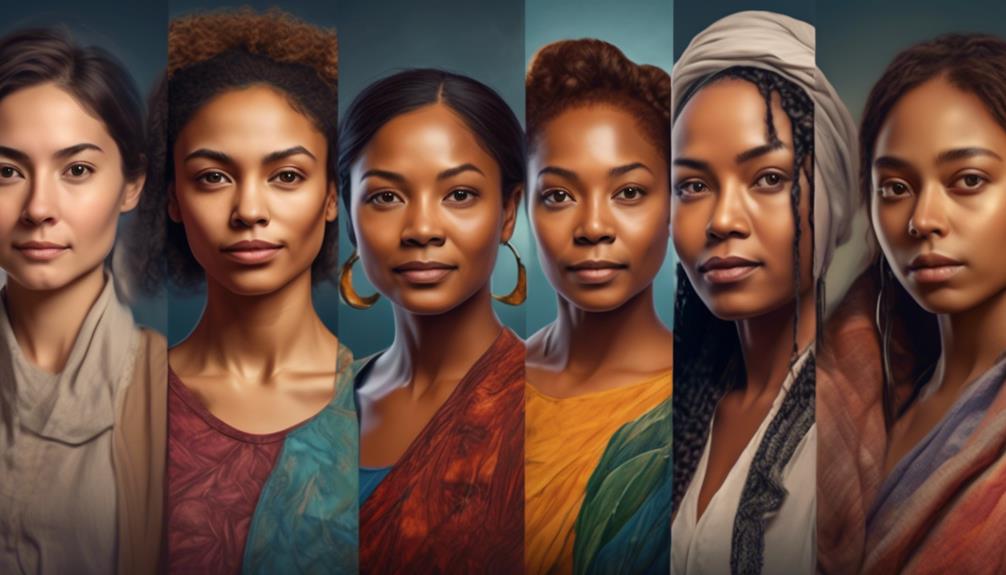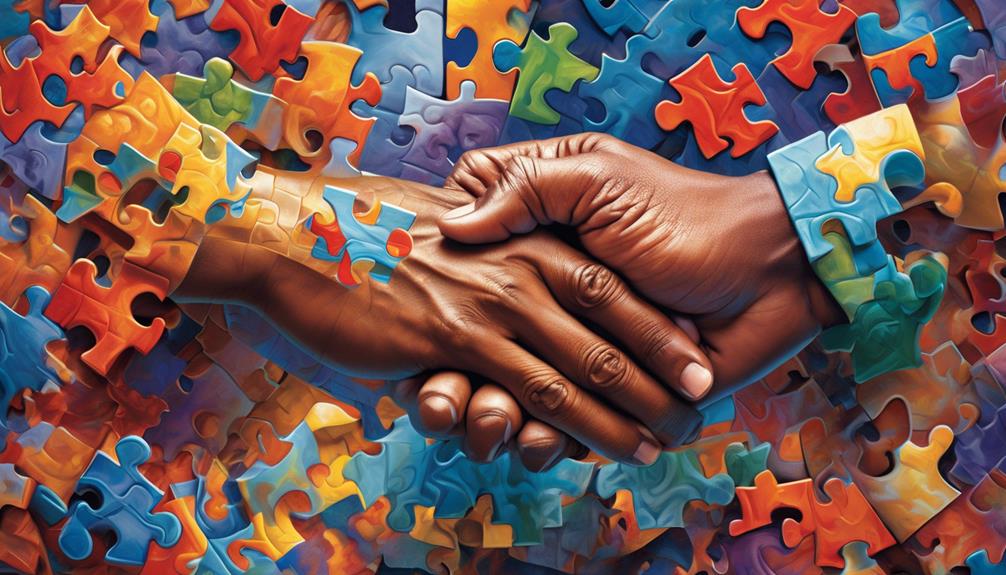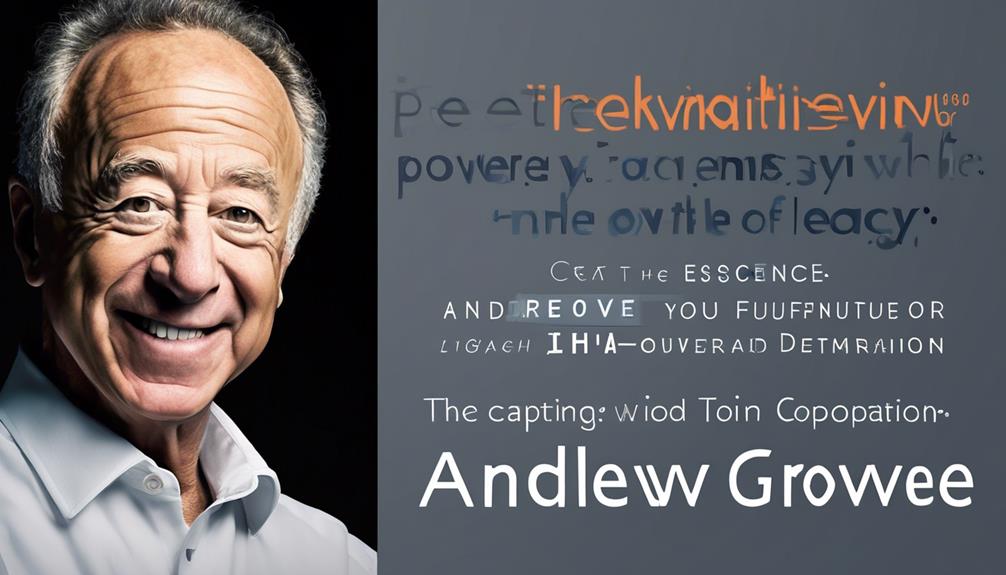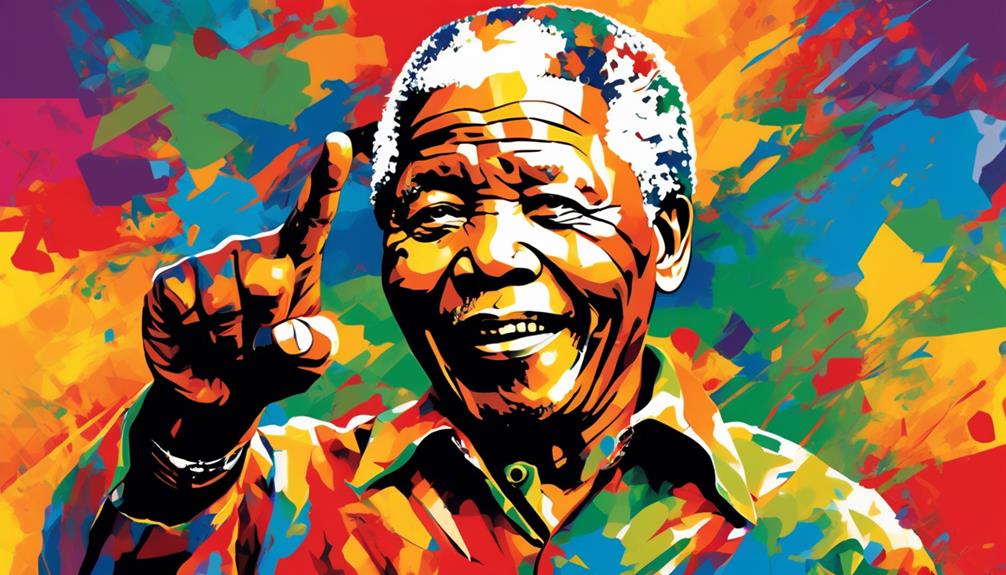As authors, we frequently encounter people whose expressions leave a lasting impression and inspire us deeply. Melinda Gates is one such figure, widely recognized for her role as the Chairperson of the Bill and Melinda Gates Foundation. Her statements beautifully capture the core of a multitude of subjects including women’s empowerment, educational reform, poverty reduction, and tackling issues related to gender.
With her astute leadership insights, she sheds light on the importance of philanthropy, giving, collaborative partnerships, and innovation in making a lasting impact on society. Melinda Gates' words are a testament to her dedication and commitment to creating a better world.
In this collection of quotes, we invite you to delve into her wisdom and gain valuable insights into the multifaceted aspects of social change.
Key Takeaways
- Melinda Gates emphasizes the importance of empowering women and achieving gender equality as a key driver of sustainable development.
- She recognizes that education is a powerful tool in breaking the cycle of poverty and promoting social progress.
- Melinda Gates believes in the collaborative efforts of individuals, organizations, and stakeholders in lifting people out of poverty and building stronger communities.
- She acknowledges the transformative role of technology in expanding access, enhancing connectivity, and shaping futures, particularly in areas like healthcare.
Empowering Women
Empowering women is a crucial step towards achieving gender equality and fostering sustainable development. Women empowerment refers to the process of granting women the power and resources they need to have control over their own lives and contribute to society. It involves providing women with access to education, healthcare, economic opportunities, and decision-making positions.
Gender equality is essential for creating a just and equitable society. When women are empowered, they can actively participate in all spheres of life, including politics, business, and social affairs. This not only benefits women individually but also has a positive impact on their families, communities, and the overall economy.
Promoting women empowerment and gender equality requires addressing various societal norms and practices that perpetuate discrimination and inequality. It involves challenging gender stereotypes, promoting women's rights, and ensuring equal opportunities for all.
Efforts to empower women and promote gender equality have been recognized as key drivers of sustainable development. The United Nations' Sustainable Development Goals (SDGs) highlight the importance of achieving gender equality and empowering all women and girls. By empowering women, we can create a more inclusive and prosperous society for everyone.
Education Transformation

As we explore the topic of Education Transformation, it's crucial to recognize the pivotal role that access to education plays in empowering women and achieving gender equality. Education reform is essential in creating a more equitable society, where everyone has equal opportunities to learn and thrive.
Here are three reasons why education transformation is vital:
- Breaking the cycle of poverty: Education is a powerful tool that can break the cycle of poverty. When individuals, especially women, have access to quality education, they can acquire the knowledge and skills needed to secure better jobs and improve their economic status. This not only benefits individuals but also uplifts entire communities.
- Promoting social progress: Education is a catalyst for social progress. By providing equal educational opportunities to all, we foster inclusivity and diversity, leading to a more tolerant and accepting society. Education empowers individuals to challenge societal norms, advocate for their rights, and contribute positively to their communities.
- Empowering future generations: Education is a gift that keeps on giving. When we invest in education today, we empower future generations to reach their full potential. By prioritizing educational equity, we create a brighter future where every child, regardless of their background, can access the knowledge and skills they need to thrive.
Education transformation isn't just a necessity; it's a moral imperative. It's our collective responsibility to ensure that every individual, regardless of their gender or socio-economic status, has equal access to quality education. Through education reform and educational equity, we can build a more just and prosperous world for all.
Poverty Alleviation
When it comes to poverty alleviation, Melinda Gates emphasizes the impact of education and the importance of empowering women. She believes that education has the power to transform lives and break the cycle of poverty.
Additionally, Gates recognizes that empowering women is crucial in reducing poverty, as educated and empowered women are more likely to invest in their families and communities, leading to sustainable development.
Impact of Education
Education plays a pivotal role in lifting individuals out of poverty. It isn't just about acquiring knowledge, but also about empowering individuals to make informed decisions and pursue opportunities. In the context of education reform, digital learning has emerged as a powerful tool to expand access to quality education, especially in underserved communities.
With digital learning, individuals can access educational resources and engage in interactive online courses, breaking down barriers of distance and affordability. This has the potential to level the playing field and provide equal opportunities for all. Moreover, digital learning allows for personalized and flexible learning experiences, catering to individual needs and learning styles.
By investing in education reform and embracing digital learning, we can create a future where poverty is no longer a barrier to success and prosperity.
- Digital learning opens up access to education for marginalized communities.
- Personalized learning experiences cater to individual needs and learning styles.
- Education reform and digital learning empower individuals to break the cycle of poverty.
Empowering Women
Empowering women is crucial for alleviating poverty and creating a more inclusive and prosperous society. Gender equality and women empowerment are key factors in achieving sustainable development and reducing poverty rates globally.
When women are given equal opportunities and access to resources, they can contribute significantly to the economic growth of their communities and countries. By investing in women's education, healthcare, and economic empowerment, we can break the cycle of poverty and create a more equitable society.
Studies have shown that empowering women not only improves their own well-being but also has a positive impact on their families and communities. It's important to promote policies and initiatives that support gender equality, ensure women's rights, and provide them with the necessary tools and opportunities to thrive.
Together, we can create a world where women are empowered and poverty is eradicated.
Leadership Insights

Throughout her career, Melinda Gates has shared valuable leadership insights that have inspired and guided individuals in various industries. As a leader herself, Gates understands the importance of leadership development and effective communication in driving positive change.
Here are three key insights from Gates that can help individuals become better leaders:
- Empathy as a leadership skill: Gates emphasizes the significance of empathy in leadership. She believes that understanding and connecting with others' experiences and emotions enables leaders to make more informed decisions and build stronger relationships.
- Creating a culture of collaboration: Gates stresses the importance of fostering a collaborative environment where individuals feel empowered to share their ideas and work together towards common goals. She believes that diverse perspectives and inclusive decision-making lead to better outcomes and innovation.
- The power of effective communication: Gates highlights the role of effective communication in effective leadership. She encourages leaders to listen actively, communicate clearly, and create an open dialogue where everyone feels heard and valued.
Philanthropy and Giving

In the realm of philanthropy and giving, Melinda Gates has made significant contributions to various causes and organizations. Her philanthropic initiatives focus on women's empowerment and addressing the gender gap in various aspects of society. Through the Bill and Melinda Gates Foundation, she's dedicated her efforts to improving healthcare, education, and economic opportunities for women around the world.
One of the key areas of Melinda Gates' philanthropic work is women's empowerment. She believes that when women are empowered, they have the ability to transform their communities and create lasting change. Through her foundation, she supports initiatives that provide women with access to education, healthcare, and economic opportunities. By investing in women's empowerment, she aims to break the cycle of poverty and create a more equitable society.
Additionally, Melinda Gates' philanthropic initiatives extend to addressing the gender gap in various sectors. She recognizes that women often face barriers and discrimination in areas such as technology, entrepreneurship, and leadership. To combat this, she supports programs that provide training, mentorship, and resources to help women excel in these fields. By promoting gender equality, she believes that society as a whole can benefit from the talents and perspectives of women.
Technology as a Tool

Technology serves as a powerful tool in our philanthropic efforts. With the rapid advancements in technology and the ongoing digital transformation, we can leverage its potential to create meaningful and lasting impact in the world.
- Technology enables us to reach more people: Through digital platforms and connectivity, we can expand the reach of our initiatives, making it possible to connect with individuals and communities in remote areas. This allows us to provide resources, education, and support to those who might otherwise be inaccessible.
- Technology empowers individuals: By equipping people with the necessary tools and skills, we can empower them to improve their own lives and communities. Through initiatives like digital literacy programs and access to technology, we enable individuals to gain knowledge, unlock opportunities, and shape their own futures.
- Technology amplifies our impact: With technology, we can scale our efforts and magnify our impact. By harnessing the power of data, analytics, and innovation, we can make informed decisions, optimize our interventions, and drive systemic change.
Building Stronger Communities

When it comes to building stronger communities, Melinda Gates emphasizes the importance of community empowerment strategies and collaborative problem-solving.
She believes that by empowering individuals within a community, we can create a sense of ownership and responsibility, leading to sustainable change.
Additionally, Gates highlights the significance of working together as a community to identify and address the root causes of societal challenges, fostering a more inclusive and equitable society for all.
Community Empowerment Strategies
Community empowerment strategies are essential for building stronger and more resilient communities. To achieve this, we must prioritize women's empowerment and economic development. Here are three key strategies that can evoke an emotional response in our audience:
- Education and Skill-Building: Providing access to quality education and vocational training equips individuals with the knowledge and skills they need to participate in economic activities and contribute to their community's growth.
- Access to Resources and Opportunities: Ensuring equal access to resources such as credit, land, and markets empowers individuals, particularly women, to engage in economic activities and create sustainable livelihoods.
- Strengthening Social Networks: Building strong social networks fosters collaboration, support, and sharing of knowledge and resources within the community, enhancing resilience and empowering individuals to overcome challenges together.
Collaborative Problem-Solving
To continue our exploration of building stronger communities, let's now focus on the importance of collaborative problem-solving. When it comes to addressing the challenges faced by communities, working together is crucial. Collaborative problem-solving allows us to pool our resources, knowledge, and expertise to find innovative solutions that can have a lasting impact. It involves bringing together individuals, organizations, and stakeholders from different backgrounds and perspectives to collectively tackle complex issues. By fostering a spirit of collaboration, we can leverage the strengths and talents of everyone involved to create more effective and sustainable community building efforts. To illustrate the power of collaborative problem-solving, let's look at the following table that highlights the benefits it brings to community building efforts.
| Benefits of Collaborative Problem-Solving | Examples |
|---|---|
| Enhanced problem-solving capabilities | Sharing best practices and lessons learned |
| Increased creativity and innovation | Generating new ideas and approaches |
| Improved decision-making | Considering diverse perspectives |
| Strengthened relationships and trust | Building connections and fostering cooperation |
| Greater community ownership | Empowering individuals to take ownership of solutions |
Inspiring Youth

Inspiring youth is a crucial endeavor that holds the potential to transform our future generations. As we strive to empower young people, two key areas we must focus on are inspiring entrepreneurship and promoting mental health awareness.
- Inspiring Entrepreneurship: Encouraging young minds to pursue entrepreneurship not only fosters innovation and economic growth but also instills a sense of agency and self-reliance. By providing mentorship, resources, and support networks, we can nurture the entrepreneurial spirit in youth, equipping them with the skills and mindset needed to tackle complex problems and create meaningful change.
- Mental Health Awareness: The mental well-being of young people is paramount. By fostering awareness and understanding, we can ensure that mental health issues are addressed early on, preventing long-term consequences. We must promote open conversations, reduce stigma, and provide accessible resources for mental health support. By equipping youth with the tools to navigate their emotions and seek help when needed, we empower them to lead healthier and more fulfilling lives.
Global Health Advocacy

When it comes to global health advocacy, there are two key points to consider: the impact of vaccinations and access to healthcare.
Vaccinations have the power to save lives and prevent the spread of diseases, making them a crucial aspect of global health initiatives.
Additionally, ensuring access to healthcare is essential in addressing health disparities and improving overall well-being worldwide.
These points highlight the importance of advocating for global health and working towards a healthier future for all.
Impact of Vaccinations
Vaccinations have had a profound impact on global health advocacy efforts, improving the well-being of communities worldwide. They've played a crucial role in preventing the spread of infectious diseases and reducing mortality rates.
Here are some key points to consider:
- Vaccines have saved millions of lives by preventing diseases such as polio, measles, and tetanus.
- They've contributed to the eradication of diseases like smallpox, which was once a major global health threat.
- Vaccination programs have helped to build stronger and more resilient healthcare systems, ensuring better access to healthcare services for all.
However, despite their proven effectiveness, vaccine hesitancy remains a challenge. Increasing vaccination awareness and addressing concerns through education and outreach are crucial in maintaining high vaccination rates and protecting communities from preventable diseases.
Access to Healthcare
Access to healthcare is a fundamental human right that's essential for promoting global health advocacy and ensuring the well-being of communities worldwide.
It's crucial to address the barriers that prevent individuals from accessing the healthcare they need.
Improving healthcare systems is imperative to achieving universal access to quality healthcare services. This includes enhancing infrastructure, increasing the availability of healthcare professionals, and implementing effective health policies.
By investing in healthcare, we can reduce health inequalities and improve the overall health outcomes of populations.
It's important to prioritize the needs of vulnerable and marginalized communities, ensuring that they've equal access to healthcare services.
Equality and Gender Issues

In the realm of equality and gender issues, we strive to create a world where everyone has equal opportunities and experiences, regardless of their gender. Achieving gender equality and advancing women's rights isn't just a matter of fairness, but also a fundamental human right. It's a cause that requires our unwavering commitment and collective action.
Gender equality isn't only about empowering women; it's about creating a society where everyone, regardless of gender, can thrive and reach their full potential.
Women's rights are human rights, and we must continue to fight for equal access to education, healthcare, employment, and decision-making positions for women.
Breaking down gender stereotypes and challenging societal norms is crucial in promoting gender equality and ensuring that no one is limited by preconceived notions of what they can or can't do.
We recognize that achieving true equality requires addressing deep-rooted systemic barriers and biases. It requires dismantling the patriarchal structures that perpetuate gender inequality.
Together, we can build a world where every individual, regardless of their gender, can live with dignity, respect, and equal opportunities.
Collaborative Partnerships

Collaborative partnerships are instrumental in driving meaningful change and achieving our shared goals. At the Bill and Melinda Gates Foundation, we recognize the power of collaboration in creating sustainable development and empowering entrepreneurs. Through strategic partnerships, we are able to leverage our resources and expertise to make a greater impact on society.
To illustrate the importance of collaborative partnerships, let's examine a table showcasing some of our key partnerships:
| Partner | Focus Area |
|---|---|
| United Nations | Global health and poverty alleviation |
| World Bank Group | Education and economic development |
| Gavi, the Vaccine Alliance | Immunization and healthcare access |
| Global Fund | HIV/AIDS, tuberculosis, and malaria |
| International Monetary Fund | Economic stability and financial inclusion |
These partnerships allow us to pool our knowledge, networks, and resources to address complex challenges. By working together, we can achieve greater efficiency and effectiveness in our efforts to improve lives around the world.
Through collaborative partnerships, we are able to amplify our impact and drive sustainable development. By empowering entrepreneurs and investing in their ideas and innovations, we can create opportunities for economic growth and social progress. We believe that by working together, we can make a lasting difference in the lives of people in need.
Innovation and Creativity

By embracing innovation and fostering creativity, we can propel society forward and unlock new possibilities for positive change. In the field of healthcare, innovation has the power to revolutionize the way we diagnose, treat, and prevent diseases.
Creative solutions can help us bridge the gap between the rich and the poor, addressing poverty in ways we've never imagined before.
- Innovation in healthcare can lead to breakthroughs in medical technology, enabling us to provide better and more accessible healthcare to those in need. It can bring about advancements in telemedicine, allowing doctors to reach patients in remote areas and providing them with life-saving treatments.
- Creative solutions for poverty can involve empowering individuals and communities with the skills and resources they need to lift themselves out of poverty. It can mean designing innovative financial tools that help people save, invest, and build a better future for themselves and their families.
- By encouraging innovation and creativity, we can find new ways to address the root causes of poverty and create lasting change. Through collaboration and the sharing of ideas, we can unlock the potential for innovative solutions that have the power to transform lives and uplift communities.
Making a Lasting Impact

To make a lasting impact, we must strive for innovative solutions that address the root causes of the issues we seek to change. In the realm of sustainable development, it's essential to adopt a holistic approach that tackles the underlying problems rather than just treating the symptoms. Social entrepreneurship plays a crucial role in this process, as it combines business principles with a focus on social and environmental impact.
Melinda Gates, the famous Chairperson of the Bill and Melinda Gates Foundation, emphasizes the importance of sustainable development and social entrepreneurship. She believes that by creating innovative and scalable solutions, we can address the challenges faced by communities around the world. These solutions shouldn't only provide immediate relief but also create long-term change by empowering individuals and communities to become self-sufficient.
Gates encourages individuals and organizations to think creatively and embrace new ideas. She believes that by leveraging technology, we can find innovative ways to solve complex problems and create a positive impact. By investing in education, healthcare, and economic opportunities, we can contribute to sustainable development and improve the lives of people globally.
Frequently Asked Questions
How Did Melinda Gates Become the Chairperson of the Bill and Melinda Gates Foundation?
We became the chairperson of the Bill and Melinda Gates Foundation through her passion for philanthropy and her partnership with Bill Gates.
She's always been dedicated to making a positive impact in the world and saw the foundation as a way to do so on a larger scale.
Her journey involved working together with Bill to shape the foundation's mission and strategies, and she continues to lead and drive its efforts to improve lives globally.
What Are Some Specific Examples of Initiatives or Projects That Melinda Gates Has Been Involved in to Empower Women?
When it comes to initiatives and projects aimed at empowering women, Melinda Gates has been involved in a multitude of impactful endeavors.
From advocating for family planning and maternal health to promoting women's economic empowerment and gender equality, her leadership and insights have made a significant difference.
Through the Bill and Melinda Gates Foundation, she's supported programs that address gender disparities and provide opportunities for women to succeed and thrive.
Her dedication to empowering women has left a lasting legacy of positive change.
Can You Provide Any Statistics or Evidence on the Impact of the Foundation's Education Transformation Efforts?
Impact statistics and evidence of success are crucial in evaluating the effectiveness of the foundation's education transformation efforts. We've conducted extensive research and analysis to measure the impact of our initiatives.
Through data-driven evaluations, we've seen improved educational outcomes, increased access to quality education, and enhanced teacher training. These statistics provide valuable insights and guide our ongoing efforts to transform education and empower students around the world.
How Does the Bill and Melinda Gates Foundation Measure the Success of Their Poverty Alleviation Programs?
When it comes to measuring impact and evaluating effectiveness, the Bill and Melinda Gates Foundation employs a comprehensive approach.
Our poverty alleviation programs are assessed through rigorous data collection, analysis, and feedback loops. We track key indicators and measure progress against predetermined goals.
Additionally, we collaborate with partners and experts to ensure that our interventions are evidence-based and targeted towards sustainable outcomes.
Can You Share Any Personal Anecdotes or Stories That Highlight Melinda Gates' Leadership Qualities and Insights?
In terms of Melinda Gates' personal leadership qualities, she's shown great determination and empathy. Her insights on women empowerment are truly inspiring. She's advocated for gender equality and has worked tirelessly to uplift women around the world.
One anecdote that highlights her leadership is when she spearheaded the creation of the Bill and Melinda Gates Foundation, which has made a significant impact in poverty alleviation and healthcare. Her dedication and vision have been instrumental in creating positive change on a global scale.
Are Melinda Gates and Martha Stewart Similar in Their Approach to Success and Philanthropy?
Melinda Gates and Martha Stewart are both widely respected figures in their respective fields. While Melinda focuses on philanthropy and global development, Martha Stewart is known for her expertise in homemaking and business. Despite their different areas of influence, they share a common drive for success. As Martha Stewart said in one of her famous quotes, “Without an open-minded mind, you can never be a great success.” This mentality is shared by both women, reflecting their determined approaches to achieving their goals both professionally and philanthropically.
Conclusion
In conclusion, Melinda Gates, the famous chairperson of the Bill and Melinda Gates Foundation, has shared valuable insights on empowering women, transforming education, alleviating poverty, and promoting collaborative partnerships.
Through her leadership and philanthropy, she's emphasized the importance of equality, gender issues, innovation, and making a lasting impact. As she once said, 'If you're successful, it's because somewhere, sometime, someone gave you a life or an idea that started you in the right direction.'
Joy, as our Editor in Chief, ensures the highest standard of content. Her talent in writing is complemented by her attention to detail and passion for literature and culture. Joy’s expertise and love for the English language shine through in her editorial work, making each piece a testament to quality and clarity.










